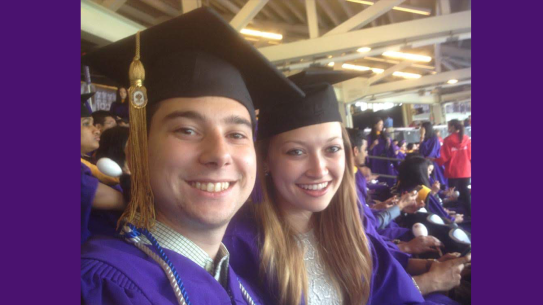Researchers Develop New Model to Study Epidemics
Pioneering Work at NYU School of Engineering Examines the Link between Individuals and Contagion to Predict Whom to Vaccinate or Isolate
For decades, scientists have been perfecting models of how contagions spread, but newly published research takes the first steps into building a model that includes the loop linking individual human behavior and the behavior of the epidemic itself.
The first results of the highly complex modeling led by researchers at the New York University Polytechnic School of Engineering were recently spotlighted as “brilliant research” by the American Physical Society.
Eventually, the team hopes the model will more accurately predict who should be vaccinated and isolated first and what travel restrictions will be most effective in preventing different epidemics. The speed of mass communication and modern travel requires changes to most current models. Even underdeveloped countries now have electronic devices that quickly spread the word about diseases and airplanes can carry the infected everywhere nearly as quickly, explained Alessandro Rizzo, visiting professor of mechanical engineering and a leader of the research effort. Modeling thus must be improved by accounting for contagions that spread more slowly than travelers and ones that spread more quickly.
The new model also takes into consideration the differing rates at which the infected and those who merely fear infection react and thereby spread disease. For example, prior work by other researchers indicates that symptomatic people will often self-isolate and—not surprisingly—that the actions of the infected are more relevant to the spread of an epidemic than those of healthy individuals who are avoiding a contagious area. But in some kinds of epidemics, ill people who are asymptomatic behave as if they are healthy, selfishly infecting others. The new model seeks to account for these individual reactions and more. The research team expects that a fully tested and working model is several years away.
The paper, “Effect of Individual Behavior on Epidemic Spreading in Activity-Driven Networks,” was authored by Rizzo; NYU School of Engineering Mechanical Engineering, Professor Maurizio Porfiri; and Mattia Frasca of Università degli Studi di Catania, Italy. Rizzo is also a tenured researcher of Politecnico di Bari, Italy. The authors acknowledged the contributions of Dr. Biagio Pedalino, M.D., resident advisor in the U.S. Center for Disease Control and Prevention’s Morocco Field Epidemiology Training Program of the Center for Global Health. The paper was published in Physical Review E. The National Science Foundation supported the research and the Honors Center of Italian Universities provided indirect support.
A second set of research findings, also published in Physical Review E, advances modeling to account for differing probability levels of spreading contagion that arise from infected agents travelling between zones. The researchers suggested ways to calculate factors affecting the onset of contagion, including the mixing of these contagious people in the population, the contagiousness of the disease, recovery rates, and the geography of the areas. Travel by infected agents was found to be a particular trigger to launching a disease to the level of an epidemic.
Rizzo authored the paper with collaborators Arturo Buscarino and Mattia Frasca of the Università degli Sudi di Catania, Italy. Their paper, “Local and Global Epidemic Outbreaks in Populations Moving in Inhomogeneous Environments,” is here.




